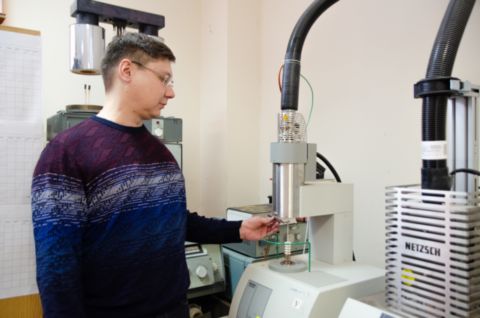Scientists from South Ural State University have improved building materials with benefits for the environment. They added sludge from water treatment plants to the clay batch and obtained durable ceramics, the production of which could be established on an industrial scale. The results of the research have been published in the Materials highly rated journal (Q1).
Both for Ecology and Construction
In modern urban water sector, sludge is formed at drinking water treatment stations as a result of natural water treatment with coagulants. Sludge has high water contents and is formed in significant volumes - up to 5% of the performance of a station. In Chelyabinsk, such sludge is pumped to sewage treatment plants, but instead it can be effectively used in the construction industry after dehydration.
The separation of the sludge will have a beneficial effect on the environment. The very same dry mass, if obtained in the right way, can be used to improve the properties of building materials. The efficiency of this method has been proved by the scientists from South Ural State University.
Stronger and Faster
Researchers from the SUSU Institute of Architecture and Construction have been working on the problem for several years. First of all, it is necessary to resolve the issue of sludge dewatering, since its effect on the properties of ceramics obtained from the clay charge depends on the separation method. As a result of cooperation between the Department of Town Planning, Engineering Networks and Systems and the Department of Building Materials and Products of the SUSU Institute of Architecture and Construction a research group led by a Candidate of Sciences (Chemistry), Associate Professor Marina Belkanova and a Candidate of Sciences (Engineering) Aleksandr Orlov has determined that 4% of the precipitate obtained by the freeze-thaw method allows to reduce the firing temperature of the moulded material, and also reduces the sensitivity to drying and accelerates its process.
.png)
Photo: Samples of the ceramics obtained by adding sewage sludge
“We have comprehensively considered the process of obtaining sludge and its use for modifying building materials. The papers that we have analyzed for our research reflect the results of only one part of the process. Of course, the practice of modifying ceramics with building materials exists; in America, expanded clay is obtained this way. However, in Russia, such experiments have almost never been carried out, and work has not been done on the example of Chelyabinsk at all,” said Aleksandr Orlov.
Test for Flexibility
The research has been carried out using the laboratory equipment of the department: a hydraulic press, a furnace, and a derivatograph. The obtained data on the improvement of the properties of ceramics have been then checked in the laboratory of the Chelyabinsk plant specializing in the production of ceramic blocks and bricks. The results of both experiments have been the same.
.png)
Photo: A.A. Orlov, Candidate of Sciences (Engineering)
Scientists of SUSU intend to use the promising results, taking the waste of the water treatment plant located in St. Petersburg as a basis. According to preliminary data, the sludge coincides in chemical composition with that obtained in Chelyabinsk. If, after adding it to the clay charge, researchers get ceramics with improved properties, then the method proposed by the SUSU researchers can be called universal for working with waste from water treatment plants throughout Russia.
Potentially, the introduction of such a method of waste treatment and sludge use may be of interest to enterprises producing building materials. In this case, the results of the research by the SUSU scientists will be useful in the field of resource saving, ecology, and construction.
South Ural State University (SUSU) is a university of digital transformations, where innovative research is conducted in most of the priority fields of science and technology development. In accordance with the strategy of scientific and technological development of the Russian Federation, the university is focused on the development of large scientific interdisciplinary projects in the field of digital industry, materials science, and ecology. In the Year of Science and Technology, it will take part in the competition under the Priority-2030 program. The university performs the functions of a regional project office of the World-class Ural Interregional Research and Education Centre.




